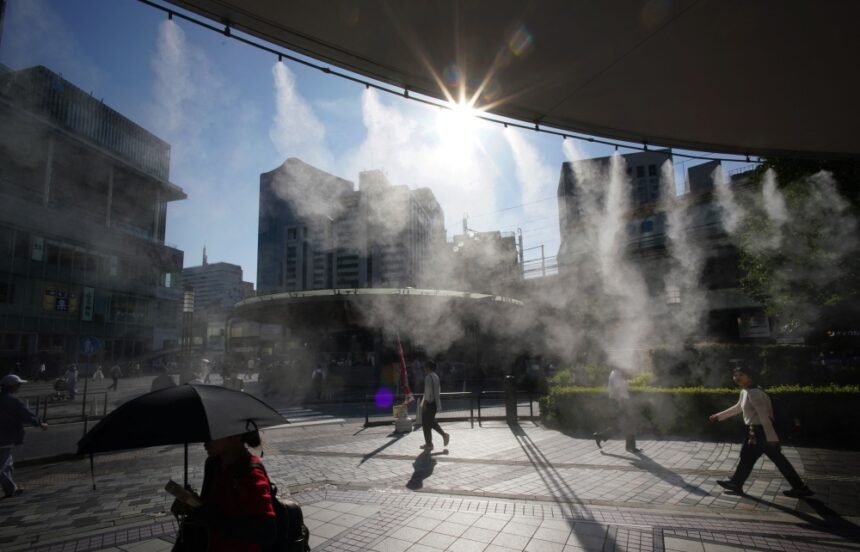TOKYO, June 20 — Japan is sweltering under an unusually intense heatwave that has left at least four people dead from heatstroke and triggered widespread government warnings, as experts say the scorching weather is unlike anything recorded this early in the year.
The Japan Meteorological Agency (JMA) has issued repeated heat alerts since Tuesday, urging residents to stay indoors, hydrate, and check on elderly neighbours.
The heat has been especially punishing for older citizens — all four recorded fatalities were elderly, including a 96-year-old woman found collapsed in a field in Gunma prefecture.
In some parts of the country, temperatures soared more than 10°C above the seasonal average.
Kofu, northwest of Tokyo, reported 38.2°C — far above what’s typical for Japan’s rainy season. Gunma hit 37.7°C, and Shizuoka registered 37.6°C.
Tokyo itself reached 34.8°C on Wednesday, while Osaka climbed to 33.4°C. In all, 547 locations nationwide saw the mercury pass 30°C.
“The current heat is clearly unusual,” said Yukiko Imada, a professor with the University of Tokyo’s Department of Climate System Research, to South China Morning Post.
“For the first time since records began, over 150 locations have experienced extreme heat exceeding 35 degrees by mid-June.”
Imada added that the baiu front — the seasonal rain front — had disappeared unusually early, a phenomenon she attributed to the premature expansion of the Pacific high-pressure system over Japan.
“Typically, the system expands over the country in July or August,” she said.
Tokyo doctors treated 169 people for heatstroke on Tuesday alone, with another 57 cases on Wednesday, according to Agence France-Presse.
The JMA’s three-month forecast suggests the worst may be yet to come.
“There is a high probability that temperatures this year will be above normal,” Imada warned.
In 2024, Tokyo alone saw a total of 252 suspected heatstroke deaths from June to early September, according to Mainichi Shimbun.
In addition to general heat advisories, the JMA has deployed its heat stress index across 48 cities.
None were categorised as “safe”.
In 15 cities, authorities urged residents to hydrate and take breaks if outdoors. In the remaining 32, the message was blunt: “heavy exercise prohibited”.
The agency has also issued practical guidance: avoid unnecessary outings, use air conditioning even if concerned about energy bills, and stay in contact with vulnerable neighbours.
Last summer tied Japan’s hottest on record. Officials coined new terms like moshobi — ferociously hot days above 35°C — and kokushobi — cruel heat days above 40°C — as extreme temperatures became increasingly frequent.
Gunma recorded temperatures above 40°C in July 2023. Since 2000, Japan has seen such highs on 59 occasions. The national record of 41.1°C was hit in both Saitama (2018) and Shizuoka (2020).
Cooling shelters have been set up in some areas, while local governments continue to monitor vulnerable populations.
The extreme weather is expected to persist into the weekend.


